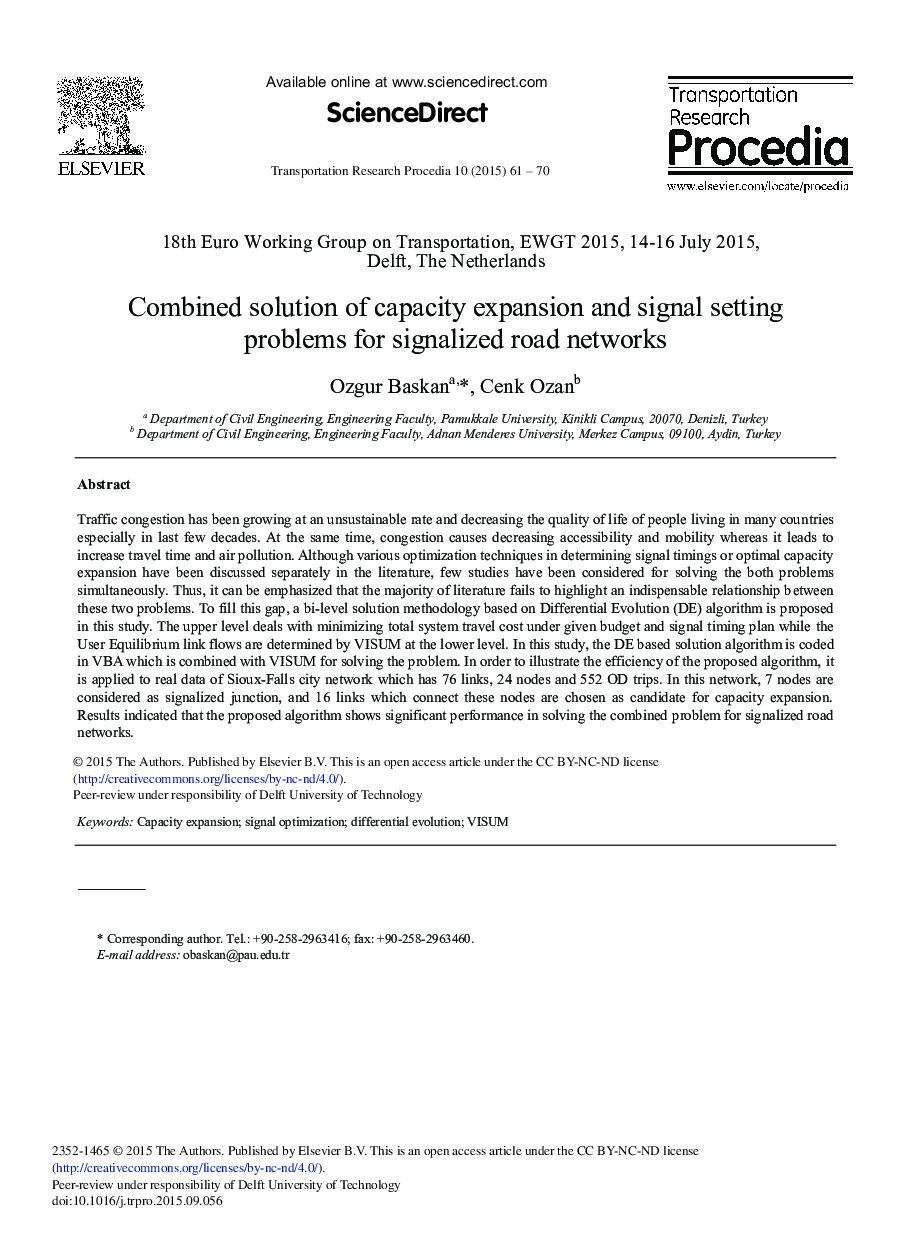| Article ID | Journal | Published Year | Pages | File Type |
|---|---|---|---|---|
| 1106816 | Transportation Research Procedia | 2015 | 10 Pages |
Traffic congestion has been growing at an unsustainable rate and decreasing the quality of life of people living in many countries especially in last few decades. At the same time, congestion causes decreasing accessibility and mobility whereas it leads to increase travel time and air pollution. Although various optimization techniques in determining signal timings or optimal capacity expansion have been discussed separately in the literature, few studies have been considered for solving the both problems simultaneously. Thus, it can be emphasized that the majority of literature fails to highlight an indispensable relationship between these two problems. To fill this gap, a bi-level solution methodology based on Differential Evolution (DE) algorithm is proposed in this study. The upper level deals with minimizing total system travel cost under given budget and signal timing plan while the User Equilibrium link flows are determined by VISUM at the lower level. In this study, the DE based solution algorithm is coded in VBA which is combined with VISUM for solving the problem. In order to illustrate the efficiency of the proposed algorithm, it is applied to real data of Sioux-Falls city network which has 76 links, 24 nodes and 552 OD trips. In this network, 7 nodes are considered as signalized junction, and 16 links which connect these nodes are chosen as candidate for capacity expansion. Results indicated that the proposed algorithm shows significant performance in solving the combined problem for signalized road networks.
